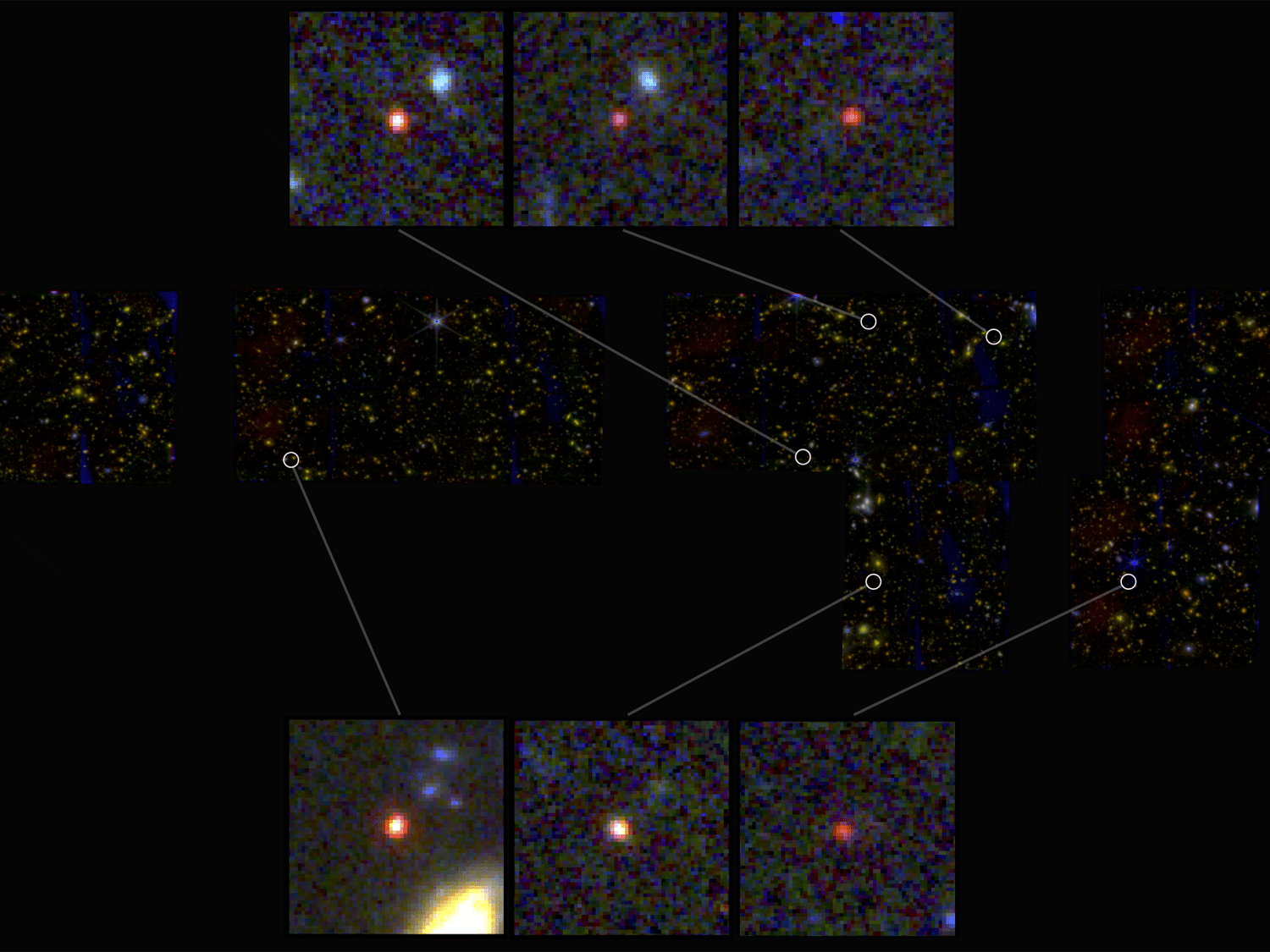One of many shock findings with the James Webb Area Telescope is the invention of huge galaxies within the early Universe. The expectations have been that solely younger, small, child galaxies would exist throughout the first billion years after the Large Bang. However a few of the newly discovered galaxies look like as massive and as mature as galaxies that we see immediately.
Three extra of those “monster” galaxies have now been discovered, they usually have the same mass to our personal Milky Means. These galaxies are forming stars almost twice as effectively as galaxies that have been shaped afterward within the Universe. Though they’re nonetheless inside normal theories of cosmology, researchers say they exhibit how a lot must be realized concerning the early Universe.
‘‘Our findings are reshaping our understanding of galaxy formation within the early Universe,’’ mentioned Dr. Mengyuan Xiao, lead creator of the brand new research and postdoctoral researcher on the College of Geneva, in a press launch.
Probably the most broadly accepted cosmological mannequin is the Lambda Chilly Darkish Matter (LCDM) mannequin which posits that the primary galaxies within the Universe didn’t have sufficient time to turn out to be so huge and may have been extra modestly sized.
The brand new findings, printed within the journal Nature, have been made utilizing JWST’s spectroscopic capabilities at near-infrared wavelengths. This enables astronomers to systematically research galaxies within the very distant and early Universe, together with these three huge and dust-obscured galaxies. The research was performed as a part of the telescope’s FRESCO program (First Reionization Epoch Spectroscopically Full Observations), which makes use of JWST’s NIRCam/grism spectrograph to measure correct distances and stellar lots of galaxies. The outcomes might point out that the formation of stars within the early Universe was way more environment friendly than beforehand thought, which does problem present galaxy formation fashions.
Nevertheless, there was some controversy as as to if these galaxies actually are super-large and mature. In August, one other research debated the sooner findings of “impossibly massive” galaxies, saying that what was noticed might have been the results of an optical phantasm, because the presence of black holes in a few of these early galaxies made them seem a lot brighter and bigger than they really have been.
However this newest research was a part of the brand new FRESCO program with JWST to systematically analyze a whole pattern of galaxies throughout the first billion years of cosmic historical past to find out whether or not they’re dominated by ionization from younger stars (starburst galaxies) or by an energetic galactic nucleus (AGN), i.e., a black gap. The researchers say this new method permits for exact distance estimates and dependable stellar mass measurements for the total galaxy pattern.
‘‘Our findings spotlight the outstanding energy of NIRCam/grism spectroscopy,” mentioned Pascal Oesch, additionally from the College of Geneva, and principal investigator of the FRESCO program. ‘‘The instrument on board the area telescope permits us to establish and research the expansion of galaxies over time, and to acquire a clearer image of how stellar mass accumulates over the course of cosmic historical past.’’

Researchers will definitely be making additional observations of all these newly seen galaxies, which hopefully will assist resolve any remaining questions on how huge these galaxies are and whether or not or not star formation was extra fast through the early Universe. The brand new observations of extra of the massive however younger galaxies raises the query of whether or not the galaxies actually are stunning monsters or optical illusions. Both method, all of the findings elevate new questions concerning the formation technique of stars and galaxies within the early Universe.
“There may be nonetheless that sense of intrigue,” mentioned Katherine Chworowsky, a graduate pupil on the College of Texas at Austin (UT), who led the research we reported on in August. “Not every part is totally understood. That’s what makes doing this sort of science enjoyable, as a result of it’d be a really boring area if one paper figured every part out, or there have been no extra inquiries to reply.”
Additional studying:





